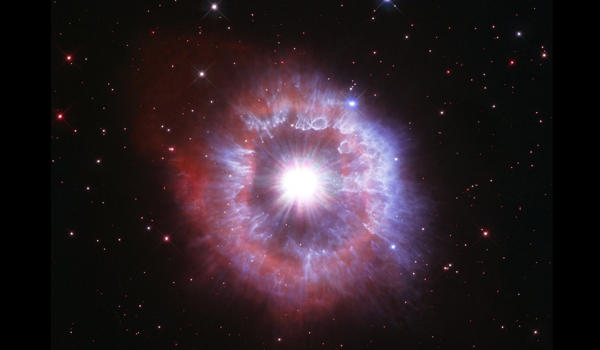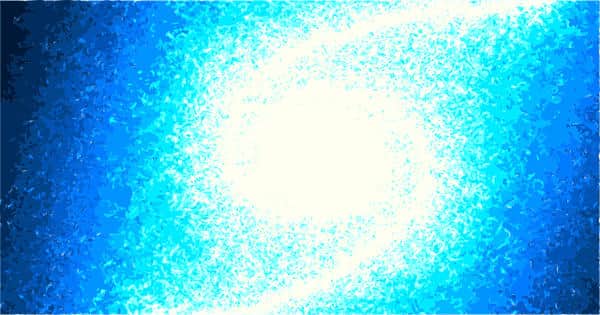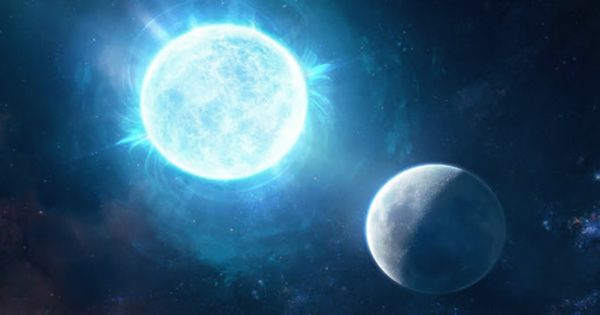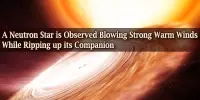The massive structure was formed by one or more massive eruptions around 10,000 years ago. The outer layers of the star were blown into space, much like a boiling teapot releasing its lid. The material ejected is roughly ten times the mass of our Sun.
These outbursts are typical of the life of a rare breed of star known as a luminous blue variable, a brief convulsive phase in the brief life of an ultra-bright, glamorous star who lives fast and dies young. These are some of the most massive and bright stars ever discovered. They only live for a few million years, compared to our Sun’s estimated 10-billion-year lifespan. AG Carinae has been around for a few million years and is located 20,000 light-years away in our Milky Way galaxy.
Luminous blue variables appear to have a dual personality: they appear to spend years in quiescent bliss before exploding in a petulant outburst. These behemoths are stars at their most extreme, vastly different from ordinary stars like our Sun. In fact, AG Carinae is estimated to be up to 70 times the mass of our Sun and to shine with the blinding brilliance of a million suns.
The expanding shell of gas and dust that surrounds the star is about five light-years wide, which equals the distance from here to the nearest star beyond the Sun, Proxima Centauri.
“I enjoy studying these stars because their instability fascinates me. They’re doing something strange, “Kerstin Weis, a luminous blue variable expert at Germany’s Ruhr University in Bochum, agreed.
Major outbursts like the one that created the nebula happen only once or twice in the lifetime of a luminous blue variable. A luminous blue variable star only sheds material when it is on the verge of exploding as a supernova. Because of their massive forms and extremely high temperatures, luminous blue variable stars like AG Carinae are constantly fighting for stability.
It’s a tug-of-war between radiation pressure from within the star pushing outward and gravity pressing inward. As a result of this cosmic alignment, the star expands and contracts. Outward pressure occasionally triumphs, and the star expands to such enormous proportions that it blows off its outer layers, much like a volcano erupting. However, this outburst occurs only when the star is on the verge of collapsing. After ejecting the material, the star contracts to its normal size settles back down and becomes dormant for a while.
Like many other luminous blue variables, AG Carinae remains unstable. It has experienced lesser outbursts that have not been as powerful as the one that created the present nebula.

Although AG Carinae is now dormant, it continues to emit searing radiation and powerful stellar wind as a super-hot star (streams of charged particles). This outflow continues to shape the ancient nebula, sculpting intricate structures as it collides with the slower-moving outer nebula. The wind can reach speeds of up to 670,000 miles per hour (one million kilometers per hour), which is roughly ten times faster than the expanding nebula. The hot wind eventually catches up with the cooler expelled material, plows into it, and pushes it away from the star. The “snowplow” effect has created a space around the star.
The red substance is a glowing hydrogen gas mixed with nitrogen gas. The diffuse red material at the upper left indicates where the wind has broken through a shaky region of material and swept it into space.
The most noticeable features are filamentary structures shaped like tadpoles and lopsided bubbles, which are highlighted in blue. These structures are made up of dust clumps that have been illuminated by the star’s reflected light. The tadpole-shaped features, most visible on the left and bottom, are denser dust clumps sculpted by the stellar wind. Hubble’s keen vision reveals the intricate structures in great detail.
The photograph was taken in both visible and ultraviolet light. The filamentary dust structures that extend all the way down toward the star are slightly clearer in ultraviolet light. Because this wavelength range can only be seen from space, Hubble is ideal for ultraviolet-light observations.
Massive stars, such as AG Carinae, are important to astronomers because of the far-reaching effects they have on their surroundings. The Ultraviolet Legacy Library of Young Stars as Essential Standards, Hubble’s largest program in history, is studying the ultraviolet light of young stars and how they shape their surroundings.
Fewer than 50 luminous blue variable stars are known among the galaxies in our local group of neighboring galaxies. These stars are in this phase for tens of thousands of years, just a blink of an eye in cosmic time. Many are expected to die in titanic supernova explosions, which enrich the universe with heavier elements other than iron.
















